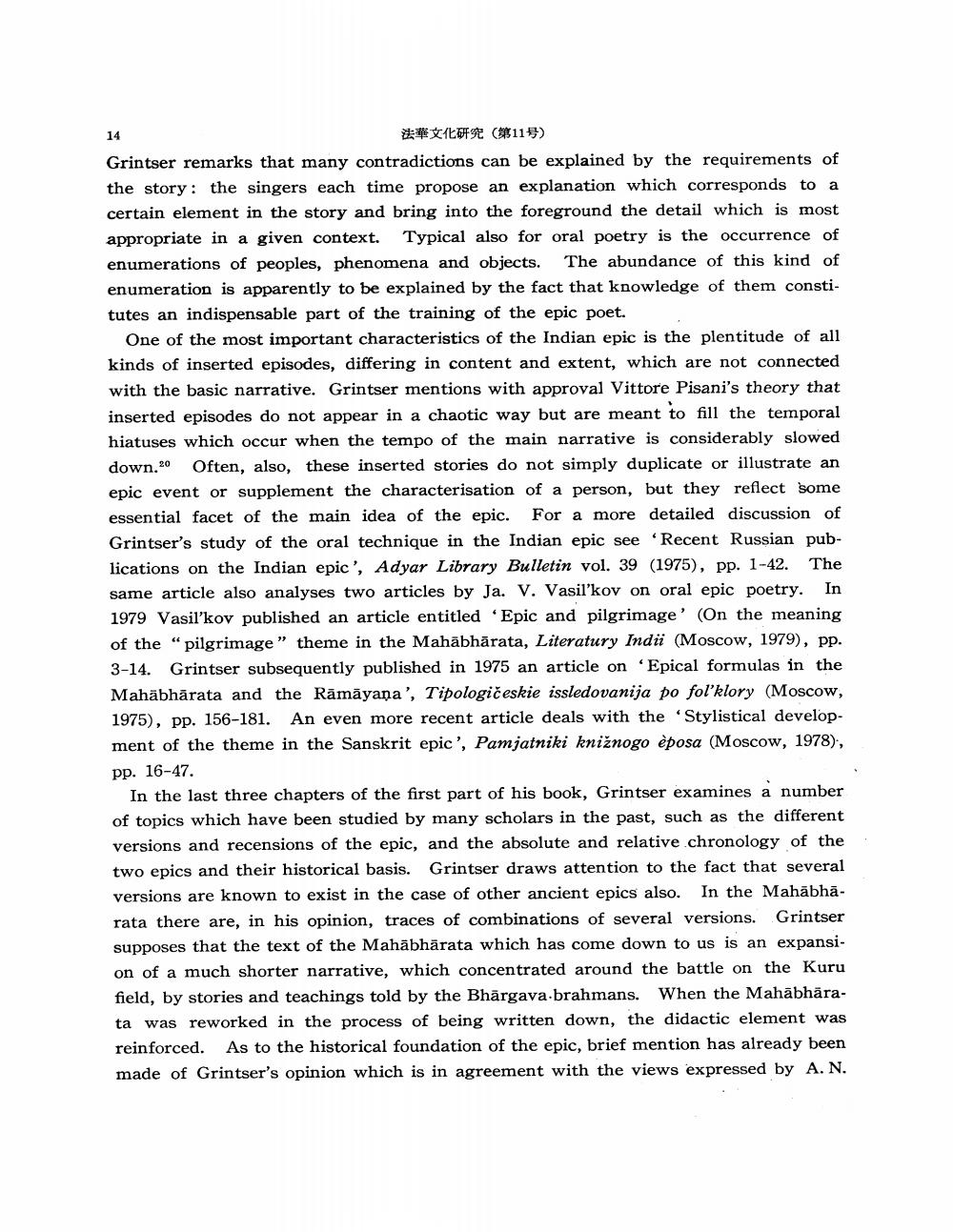________________
14
** * (115) Grintser remarks that many contradictions can be explained by the requirements of the story: the singers each time propose an explanation which corresponds to a certain element in the story and bring into the foreground the detail which is most appropriate in a given context. Typical also for oral poetry is the occurrence of enumerations of peoples, phenomena and objects. The abundance of this kind of enumeration is apparently to be explained by the fact that knowledge of them constitutes an indispensable part of the training of the epic poet.
One of the most important characteristics of the Indian epic is the plentitude of all kinds of inserted episodes, differing in content and extent, which are not connected with the basic narrative. Grintser mentions with approval Vittore Pisani's theory that inserted episodes do not appear in a chaotic way but are meant to fill the temporal hiatuses which occur when the tempo of the main narrative is considerably slowed down.20 Often, also, these inserted stories do not simply duplicate or illustrate an epic event or supplement the characterisation of a person, but they reflect some essential facet of the main idea of the epic. For a more detailed discussion of Grintser's study of the oral technique in the Indian epic see 'Recent Russian publications on the Indian epic', Adyar Library Bulletin vol. 39 (1975), pp. 1-42. The same article also analyses two articles by Ja. V. Vasilkov on oral epic poetry. In 1979 Vasilkov published an article entitled 'Epic and pilgrimage' (On the meaning of the “pilgrimage" theme in the Mahābhārata, Literatury Indii (Moscow, 1979), pp. 3-14. Grintser subsequently published in 1975 an article on 'Epical formulas in the Mahābhārata and the Rāmāyana', Tipologičeskie issledovanija po folklory (Moscow, 1975), pp. 156-181. An even more recent article deals with the "Stylistical development of the theme in the Sanskrit epic', Pamjatniki knižnogo èposa (Moscow, 1978), pp. 16-47.
In the last three chapters of the first part of his book, Grintser examines a number of topics which have been studied by many scholars in the past, such as the different versions and recensions of the epic, and the absolute and relative chronology of the two epics and their historical basis. Grintser draws attention to the fact that several versions are known to exist in the case of other ancient epics also. In the Mahābhārata there are, in his opinion, traces of combinations of several versions. Grintser supposes that the text of the Mahābhārata which has come down to us is an expansion of a much shorter narrative, which concentrated around the battle on the Kuru field, by stories and teachings told by the Bhārgava brahmans. When the Mahābhārata was reworked in the process of being written down, the didactic element was reinforced. As to the historical foundation of the epic, brief mention has already been made of Grintser's opinion which is in agreement with the views expressed by A. N.




